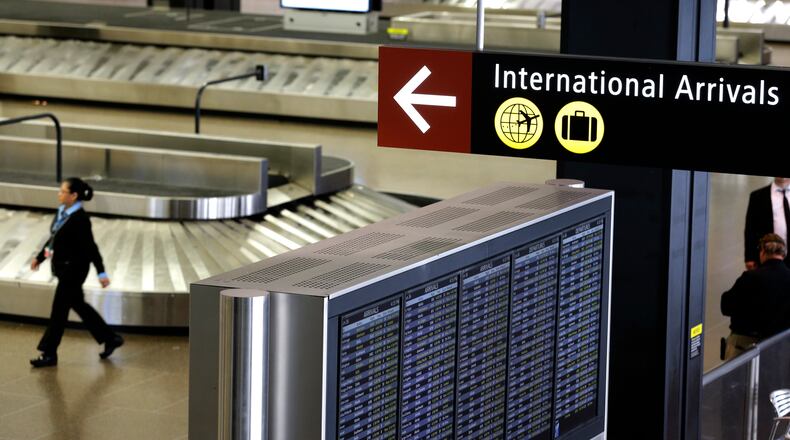The CDC said the current screening, which includes temperature checks and questioning travelers about COVID-19 symptoms, “has limited effectiveness” because some infected people have no symptoms or only minor ones. Travelers go through customs only after the health screening.
The health agency said that of the 675,000 travelers who went through the process, fewer than 15 were found to have COVID-19 because of the extra screening.
The health agency said that instead it will focus on other measures, including a stronger response to reports of illness at airports, collecting passenger-contact electronically to avoid long lines, and “potential testing to reduce the risk of travel-related transmission” of the virus.
The extra health screening applies to people who have been in China, Iran, most countries in continental Europe, the United Kingdom, Ireland and Brazil. Most people coming from those countries who aren’t U.S. citizens have been barred entry to the country.
The Homeland Security Department did not immediately respond to a request for comment Thursday.
A trade group representing the nation's largest carriers praised the change.
“We continue to support spending scarce screening resources where they can best be utilized,” Airlines for America said in a statement Thursday, “and, given the extremely low number of passengers identified by the CDC as potentially having a health issue, agree that it no longer makes sense to continue screening at these airports.”
Separately, 18 travel and airline groups asked the administration to start pre-flight virus testing as a way to reopen international travel. The groups argue that more screening could allow countries to lift travel restrictions and quarantines that have shut down most travel between the U.S. and Europe.
Airlines including Delta and Southwest have lobbied the Transportation Security Administration to screen passengers for fever before allowing them on flights within the United States. However, the CDC questioned the usefulness of temperature screening because of the large number of infected people who do not have fevers, and no widespread screening of domestic passengers was launched.
___
This story has been updated to read that screening began at some airports in January, not February.
___
This story has been corrected to note that the COVID-19 health screening began at some airports in January, not February.
